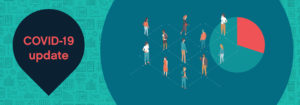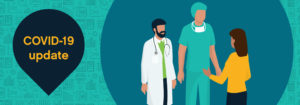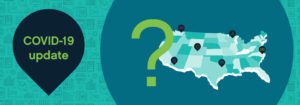When it comes to population health management, data is key. As we enter 2015, the challenge will be how to leverage existing data to make actionable decisions and predictions to improve the health of communities. Read more of MedeAnalytics' chief medical officer Terry Fouts' thoughts on how to apply this data below.
Population health will continue to be a focus in 2015, but we should start the year off by looking at some new ways to leverage underutilized and overlooked data. We can see the shortcomings of population health initiatives particularly in the “death by ZIP code” pandemic across the country today.
Where you live and what you do has more of an impact on your healthcare than anything else. Doctors have known for decades that that a person’s health outcome is determined largely by their behaviors and access to care, and less so by innate biology.
Take a look at the 94101-94199 zip codes of San Francisco, one of the most affluent cities in the country with a high concentration of hospitals and healthcare facilities.
Yet if we look at the same area and observe the incidents of asthma, we’ll see that the wealthy regions with a higher concentration of healthcare facilities in fact have higher ER rates. Clearly money and a high density of hospitals is not the magic recipe for health.
Today, this information is just that – static information that lives on a color-coded graphic. What it needs to turn into in 2015 is action.
Despite the troves of information we now have at our fingertips, the healthcare industry still does not have a way to rapidly and effectively identify, stratify and triage patients into cooperative multidisciplinary systems. Put simply, we are selling ourselves short and we need to make the leap and look at where people live and their behaviors.
The electronic health record is a great first place to start. EHRs need to empower the doctor and make the demographic data determined largely by a patient’s zip code seamlessly available. In an ideal scenario, this should go hand-in-hand with a patient’s medical history.
In addition to the EHR, clinicians also have first-hand knowledge of the patient from the patient themselves, information from family and friends, health risk appraisals, biomedical data and social data.
Large pools of data covering every aspect of the patient add richness to the activity that is hard to match with single source anecdotal information. If, and it is a big ‘if’ but growing smaller, we could amalgamate all of the inpatient data with the ambulatory data, the personal data, and the claims data, healthcare providers could get an accurate, focused and timely view of where an individual is in their care cycle and identify needed interventions and support.
Integrating more data into the EHR may take up more time and be another chore but it will be worth it. It’s no secret that EHRs and the current Meaningful Use incentive program present many time and workflow challenges for doctors. In a recent SERMO poll of 1,800 physicians across the U.S., 59 percent identified EHRs as their biggest technology challenge in 2015.
To read the full piece, visit Healthcare IT News.
Get our take on industry trends
Avoid COVID-19 modeling pitfalls by eliminating bias, using good data
COVID-19 models are being used every day to predict the course and short- and long-term impacts of the pandemic. And we’ll be using these COVID-19 models for months to come.
Read on...Population Health Amid the Coronavirus Outbreak
In speaking with many colleagues throughout the provider and payer healthcare community, I’ve found an overwhelming sense of helplessness to the outbreak’s onslaught. This is exacerbated by the constant evolution of reported underlying medical conditions that indicate a higher risk of hospitalization or mortality for a coronavirus patient.
Read on...COVID-19 and the Financial Storm Ahead for Providers
Across the country, healthcare organizations are seeing 40%-80% declines in monthly charges with some of the most profitable services lines only seeing 20% of their normal monthly volumes during the pandemic.
Read on...3 Steps Any Healthcare Organization Can Take to Improve Enterprise Analytics
By Kristin Weir When it comes down to the most basic purpose of why organizations use analytics, it’s simple: they…
Read on...


